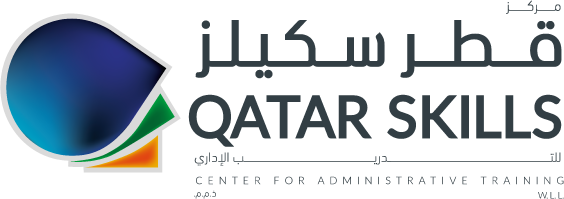array (
'course-city' =>
array (
0 => 48,
177 => 90,
226 => 77,
336 => 106,
371 => 107,
445 => 72,
486 => 108,
528 => 109,
551 => 110,
582 => 111,
604 => 71,
639 => 112,
673 => 78,
708 => 113,
798 => 70,
818 => 114,
875 => 115,
877 => 127,
910 => 116,
1054 => 117,
1226 => 118,
1324 => 91,
1402 => 119,
1492 => 120,
),
'course-language' =>
array (
0 => 49,
706 => 126,
),
'types' =>
array (
0 => 81,
),
'course-category' =>
array (
0 => 67,
127 => 64,
128 => 65,
129 => 58,
130 => 59,
131 => 66,
132 => 125,
133 => 60,
134 => 61,
135 => 123,
136 => 46,
137 => 51,
138 => 62,
139 => 85,
140 => 83,
141 => 76,
144 => 99,
145 => 57,
146 => 63,
149 => 97,
152 => 98,
157 => 124,
158 => 103,
159 => 104,
160 => 105,
161 => 55,
162 => 75,
163 => 53,
164 => 56,
172 => 100,
174 => 101,
178 => 122,
191 => 121,
240 => 102,
),
'course-type' =>
array (
0 => 73,
),
)Piping Design, Construction & Mechanical Integrity (Asme B31.3 & API 570)
Course Overview:
This practical, applications-oriented course covers pipelines and piping systems design, inspection and maintenance. Upon completion of this course, delegates will be able to evaluate the mechanical design of pipelines and piping systems in accordance with the ASME Code Section VIII. They will also be able to develop a pipelines and piping systems maintenance, and then apply these requirements to typical pipelines and piping systems maintenance and inspection situations.
This course will provide an overview of pipelines and piping systems maintenance, including inspection, evaluation of various defects, and repair/alteration rules of various Codes and Standards. Simple evaluation methods for several types of defects will be described, and their use demonstrated using sample problems.
Course Objective:
Participants attending the programme will digest the following:
- Apply the latest revision of ASME B31.3 standard
- Design, fabricate, install, assess and maintain the mechanical integrity of process piping system in accordance with ASME B31.3 standard
- Recognize metallic pipe and fitting selection including its system failure, bases for selection and method requirements
- Identify the strengths of materials including its requirements and explain the base for design stresses
- Determine the components of pressure design and apply the concepts of weld joint strength factor and design pressure & temperature
- Perform the process of valve selection and list the requirements needed for the selection process
- Acquire knowledge on the design of flanged joints and describe its features & Functions
- Introduce flexibility & flexibility analysis and explain the general considerations for the layout and support of pipes
- Enumerate the various types and designs of expansion joints and describe their components and use
- Carryout the fabrication and installation methods of piping and list the requirements and guidelines needed in the inspection, examination and testing of pipes
- Heighten awareness with the concept of instrument piping and pressure relieving systems and determine how these systems can be designed
- Recognize the design, fabrication, installation, inspection, examination and testing methods for nonmetallic piping systems, category M Fluid service & high pressure piping
Who Should Attend?
This course is intended for mechanical engineers, facilities engineers, plant engineers, pipeline engineers and piping system designers who are involved in the design of in-plant piping systems for oil and gas facilities. Also suitable for top staff that have experience in related disciplines and wish to expand or refresh their knowledge of the piping field.
Course Content:
Module (01) Introduction
- General Definitions
- Piping Design Method
- Piping System Standards
- B31 Committee Organization
- 3 Scope
- Organization of the Code
- Fluid Service Definitions
- Process Piping Engineering in Petroleum Industry
Module (02) Metallic Pipe & Fitting Selection
- Piping System Failure
- Bases for Selection
- ASME B36.10 Welded &
- Seamless Wrought Steel Pipe
- ASME B36.19 Stainless Steel Pipe
- Listed versus Unlisted Piping Components
- Fluid Service Requirements
- Pipe
- Joining Method
- Fittings
- Branch Connections
- Flanges
- Gaskets
- Bolting
Module (03) Materials
- Strength of Materials
- Bases for Design Stresses
- 3 Material Requirements
Module (04) Pressure Design (Metallic)
- Design Pressure & Temperature
- Quality Factors
- Weld Joint Strength Factor
- Pressure Design of Components
Module (05) Valve Selection
- Code Requirements
- Selection by Valve Type
Module (06) Flanged
- Joints Design
- Bolt-Up
Module (07) Introduction to Flexibility Analysis
- What are we Trying to Achieve?
- Sustained Loads
- Displacement Loads
- Reaction Design Criteria
- Flexibility Analysis Example
Module (08) Layout & Support
- General Considerations
- Support Spacing
- Support Locations
- Support Elements
- Fixing Problems
Module (09) Flexibility
- General Considerations
- Friction
- Stress Intensification
- Elbow Flexibility
- Thermal Expansion
- Spring Hangers
- The Displacement Load Analysis
- Elastic Follow-Up
- Fixing Problems
- Cautions
Module (10) Reactions
- General Considerations
- Fabricated Equipment
- Rotating Equipment
- Supports
- Flanged Joints
- Cold Spring
Module (11) Flexibility Analysis
- When to Perform a Detailed Analysis
- Computer Program Attributes
- Considerations
- Solving Problems
- Typical Errors
- Sample Computer Flexibility Analysis
Module (12) Designing with Expansion Joints
- Types of Expansion Joints
- Pressure Thrust
- Installation of Expansion Joints
- Metal Bellows Expansion Joints
- Other Considerations
Module (13) Fabrication, Installation, Inspection & Testing
- Welding Processes
- Weld Preparation
- Typical Welds
- Preheating & Heat Treatment
- Bending & Forming
- Typical Owner Added Requirements
- Instrument Piping & Pressure Relieving Systems
- Nonmetallic Piping Systems Design
- Category M Fluid Service Design
- High Pressure Piping Design
Module (14) API 570 – Inspection, Repair, Alteration & Rerating of In-Service Piping
- Responsibilities
- General Considerations
- Frequency & Extent of Inspections
- Remaining Life
- MAWP
- Repairs & Alterations Rerating
Course Summary & Conclusion



